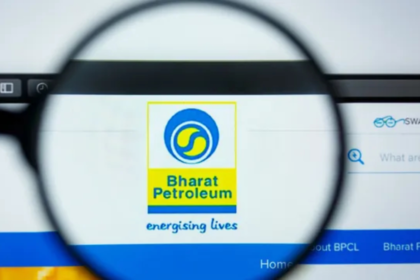LTIM LTIMindtree Limited, a leading technology consulting and digital solutions provider, is listed on the National Stock Exchange of India (NSE). The company has a robust portfolio of IT services, including application development, maintenance, outsourcing, enterprise solutions, infrastructure management services, testing, digital solutions, and platform-based solutions across diverse industries. Following the strategic merger with Mindtree in 2022, LTIMindtree has enhanced its service offerings and market presence significantly.
LTIMindtree LTD. formed after the merger of LTI and Mindtree LTD. possesses five decades of combined experience, a team of highly skilled professionals, a comprehensive set of offerings, combined with the backing of one of India’s largest and most respected companies, the Larsen & Toubro Group.
The merger of erstwhile Larsen & Toubro Infotech Limited (LTI) and erstwhile Mindtree Limited (Mindtree), completed in November 2022.
With the complementary strengths of the two organizations, the resulting entity emerged as a digital powerhouse combining the engineering prowess of erstwhile LTI and the experience capabilities of erstwhile Mindtree.
The biggest segments by revenue are banking, financial services & insurance, Hi-tech media & entertainment, Manufacturing & resources, Retail, CPG & Travel, Transportation & hospitality and Healthcare, Life sciences & Public services.
Banking, Financial Services and Insurance sector has the highest revenue contribution at INR 122,494 million while Healthcare, Life sciences & Public services has the lowest at INR 21,442 million.
The Company offers extensive range of IT services like Agile, Analytics and Information Management, Application Development, Maintenance and Outsourcing, Enterprise Solutions, Infrastructure Management Services, Testing, Digital Solutions, and Platform-based Solutions.
The company operates in the markets of North America, Europe and in some other foreign markets. But North American markets are the most lucrative as it accounts for 72.2% of revenue while Europe accounts for 15% revenue.
LTIM’s Market share is very less compared to its competitors. Around 5.6% of market share is with LTMI while all other firms enjoy market shares of >10%.
With the Company’s robust next-generation delivery capabilities and continued focus on innovation and agility, there is confidence to capitalize on several exciting opportunities that FY24 would present. LTIMindtree continues to invest in innovation, such as the GenAI program, where the company set a target of 10,000 associates across sections and plans to double down on investments. The Company’s strategic approach is guided by the LTIMOne framework, which focuses on unifying the organization and providing clarity to clients, employees, and stakeholders.
The framework encompasses one culture, one GTM (Go-To-Market) strategy, one unified capability, and one profitable growth model. Through these pillars, LTIMindtree aims to simplify operations, deliver impactful outcomes, and drive profitable growth for clients and the communities it operates in. While a cautious approach is observed towards technology spend across sectors on account of macroeconomic dynamics, the overall focus on driving technology-led innovation to prepare for future opportunities holds a significant long-term upside for our full-stack, end-to-end capabilities, and their deep industry domain exposure.
- Revenue surged from 26,109 in FY 22 to 33183 in FY 23 with an increase of 27.10% YoY. Revenues of FY 24 are expected to be 36501 with a growth rate of 10%.
- EBITDA grew from 5,249 in FY 22 to 6,108 in FY 23 with an increase of 18%. EBITDA margin of FY 24 is expected to be at 6,718.
- The banking segment had the highest contribution to the revenue at 37%. The health services sector had the lowest contribution at just 7%.
- Total capacity utilization increased from 82.6% in FY 22 to 83.5% in FY 23 along with an increase in total workforce.
- Net profit also witnessed an increase from FY 22 to FY 23, from 3,950 in FY 22 to 4,410 in FY 23.
- Management hinted at increased order inflow resulting in a positive future outlook.
The IT & BPM sector has become one of the most significant growth catalysts for the Indian economy, contributing significantly to the country’s GDP and public welfare. The IT industry accounted for 7.4% of India’s GDP in FY22, and it is expected to contribute 10% to India’s GDP by 2025.
In the Union Budget 2023-24, the allocation for IT and telecom sector stood at Rs. 97,579.05 crore (US$ 11.8 billion).
India‘s IT and business services market is projected to reach US$ 19.93 billion by 2025.
Government support for IT industry can also be seen in the form of policies as the government pushes towards digitalization in all sectors of the economy.
- Past trends – The information technology market size has grown strongly in recent years. It will grow from $8508.63 billion in 2023 to $9039 billion in 2024 at a CAGR of 6.2%.
- Expected growth – IT industry is expected to grow strongly in the next few years. It will grow to $12417.21 billion in 2028 at a CAGR of 8.3%.
- Growing influence of open source – Over the past 5 years, there has been an increasing prevalence of low-cost open-source alternative.
- Increasing digitalization – The increasing adoption of digital technologies, the rise of e-commerce, and the need to improve business operations are among the macroeconomic factors driving the growth of the IT Services market. Additionally, the increasing demand for cloud computing and cybersecurity services is also contributing to the growth of the market.
- Consumer preferences – Customers are increasingly seeking technology solutions that can help them improve their business operations and increase efficiency. They are also looking for IT services that can help them adapt to the changing business environment and stay competitive.
The strategic approaches of companies towards scaling operations, notably through mergers and acquisitions (M&A), significantly influence their competitive positioning in the industry, as exemplified by LTIM’s strategic maneuvers. This thesis explores the multifaceted impacts of such strategies on market competition, entry barriers, ROIC versus the cost of capital, and other critical aspects that shape a company’s competitive moat and industry standing.
In an ever-evolving corporate landscape, companies continually seek innovative strategies to enhance their competitive edge and market share. One such approach is scaling operations through mergers and acquisitions, a tactic that has profound implications on a company’s position within its industry.
LTIM’s Competitive Moat:
- Mergers and Acquisitions for Competitive Positioning: LTIM’s pursuit of mergers and acquisitions, such as the merger with Mindtree LTD to form LTIMindtree Ltd., underscores a deliberate strategy to enhance market share and client base. This move, as highlighted in the January 2024 Concall, is indicative of a broader industry trend where companies leverage M&A for economies of scale, workforce expansion, and improved market positioning.
- ROIC Versus Cost of Capital and MOAT: LTIM’s Return on Invested Capital (ROIC) at 38.4% for FY 23 starkly surpasses its cost of capital, standing at 13.82%. This disparity not only signals efficient capital utilization but also contributes to a robust competitive moat by outperforming industry counterparts.
- Barriers to Entry and Market Position Protection: The strategic filing of patents and development of proprietary software platforms, like CANVAS.AI by LTIM, serve as formidable barriers to entry, protecting market position and limiting competition. The necessity of substantial capital for handling large clients further solidifies these barriers, emphasizing the importance of innovation and intellectual property in sustaining a competitive advantage.
- Impact of Industry Life Cycle on MOAT: The mature stage of the Indian IT industry, characterized by a few dominant players and high barriers to new entrants, amplifies the significance of established companies like LTIM in maintaining a strong MOAT amidst stiff competition.
- Managing Supplier and Buyer Bargaining Power: LTIM’s strategic workforce management and long-term client contracts reflect adept handling of supplier and buyer bargaining powers. Such strategies ensure a steady supply of talent and sustained client satisfaction, essential for maintaining competitive advantage and enhancing MOAT.
- Market Saturation and Differentiation Strategies: Despite the saturated nature of the Indian IT industry, LTIM distinguishes itself through continuous investment in R&D and the development of cutting-edge software platforms, underscoring the critical role of innovation in competitive differentiation.
- Strategic Responses to Industry Concentration: LTIM’s approach to addressing industry concentration through M&A reflects a strategic response to market saturation, aiming for a larger market share and client base as a means to strengthen its competitive position.
- Investment Trends and Market Share Expansion: LTIM’s aggressive investment in M&A and infrastructure, resulting in significant market share growth, highlights the company’s commitment to expanding its competitive moat and industry leadership.
- Supplier Leverage and Operational Flexibility: The moderate leverage of suppliers, owing to a robust talent pool and strategic wage policies, positions LTIM favorably in managing operational costs and sustaining its competitive moat.
- Industry Entry and Exit Dynamics: The stability of entry and exit rates in the high-value client segment of the IT industry provides LTIM with opportunities to further solidify its MOAT, leveraging its established market presence.
LTIM’s strategic emphasis on mergers and acquisitions, coupled with its adept management of competitive dynamics such as ROIC, barriers to entry, and bargaining powers, exemplifies a comprehensive approach to sustaining and enhancing competitive advantage. The company’s proactive strategies in a mature and saturated market underscore the pivotal role of strategic foresight and operational excellence in maintaining industry leadership and a robust competitive moat.






